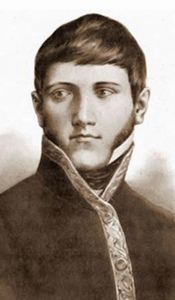We would undoubtedly have reached the town of Lingayen on the 20th if I had not found, from Arayat to Paniqui, a state of apathy among the native leaders and clergy, in whom I observed, despite having informed them of my destination and shown them my passport, a boundless indolence and a most reprehensible neglect of their duties. In these circumstances we were very eager to reach the towns administered by the Dominican Fathers, as there we would be able to see most of our wishes fulfilled. We did indeed reach Paniqui on the afternoon of the 20th, and on the afternoon of the 22nd we arrived in Lingayen.
It is not easy to give a description likely to do justice to the propitious situation of these places, and particularly to the great fertility of the soil; it is fair to say, however, that not a single space can be seen whose luxuriance does not proclaim earth’s bounty and the generous hand of nature. The perfect situation of the towns, close to each other, made the scene more picturesque, with the excellent paved roads that lead to them, the blending of colour in the fields, surrounded by high mountains, and the arrangement of the towns, which, with their external adornments, remind us of the felicity of rustic life. In general the houses are built of nipa palms and cane, some are of boards, most of the monasteries are of stone, and the streets are perfectly straight, running between cane fences, and planted with bonga, manga, camachil and other trees which make the air aromatic, soft, and pleasant to breathe.
According to the information we had acquired since our departure from Manila, we had thought that it would be easy to survey the greater part of the coast linking various places together by a series of triangles. However, on our arrival at Lingayen these hopes were thwarted when we were told by Don Manuel Martinez and the Fathers of local conditions and the slow pace of any work performed in that district. These considerations persuaded us that we should carry out the survey by sea, which would undoubtedly take much less time, without compromising the accuracy of the work. Furthermore, Don Alejandro Malaspina had left all these considerations to my judgement and had told me that in the port of Salomague or at Solot I would receive word from Don Juan Ker, the capitán and owner of the schooner Santa Isabel, which he would place at my disposal. The weather would also favour our intentions, and accordingly I asked Don Manuel Martínez, the present alcalde mayor, to provide me with a vessel capable of making the passage to Cape Engaño and return. He immediately applied himself to this task with great energy, but his efforts were in vain as it was impossible to find a suitable craft. It seemed preferable, however, even at the cost of greater expenditure, to go to Vigan by sea and undertake the operation from there, either with Ker’s vessel or with a pontín, so we did not hesitate for a moment when deciding upon our departure. I asked him to supply me with a parao and, with all preparations completed, we set sail on the morning of the 24th with a light southerly breeze and followed the delightful banks of the Agno River, crossing its bar at half past ten in the morning.
Although I was not fully satisfied with pocket chronometer number 351, as its movement might have been affected by the overland journey to Lingayen, it did not seem necessary, nevertheless, to stop to verify and correct its rate. We therefore contented ourselves with taking hour angles on the meridian of the church of San Isidro, where I intended to rate it by absolute altitudes on our return. We were further encouraged in this decision by our confidence in the position of Cape Bojeador, which would probably be confirmed by the Atrevida on the voyage to Canton, and that of Balingasay Point, the northernmost point of the Zambales coast, which we had fixed from the Descubierta at the beginning of April.
The breeze continued steady from south and SE until twelve o’clock, when it backed to north but remained light. At noon we were in latitude 16°5′15″ and longitude 0°51′49″ west of Manila. The mouth of the Agno River, in transit with the church of San Isidro, then bore S5°W, Santo Tomás N63°E, and the northernmost point of land N20°E.
